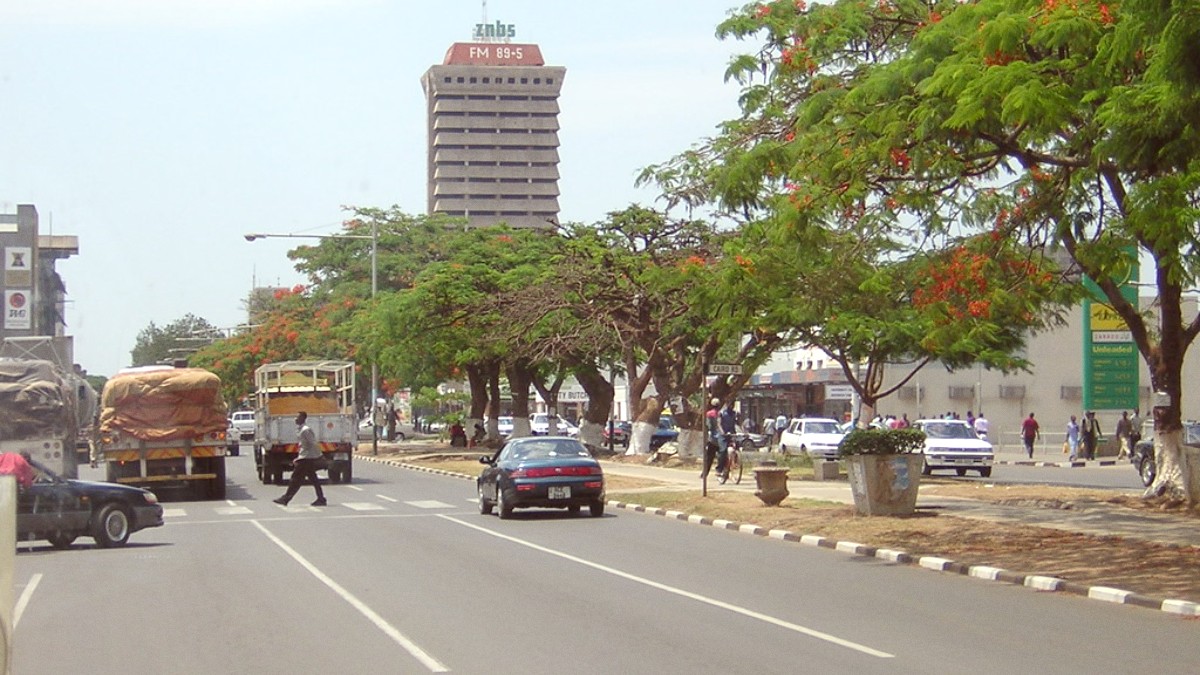
Zambia
Lusaka holds several prominent sites symbolizing its history and national identity.
The city's landmarks like the National Museum, National Assembly, Freedom Statue, and Kenneth Kaunda Statue capture moments and figures in Zambia's past and present.
Private art galleries exist in affluent areas, showing Zambian and regional artists.
Southeastern outskirts. Home to white rhinos, giraffe, zebra, wildebeest. Easy access for a quick nature escape and half-day safari.
Wildlife sanctuary and botanical garden. Focuses on rescuing injured animals. Good for families.
Collection of crocodiles, snakes, and other reptiles, providing educational insights.
Lusaka's flat topography means no dramatic natural wonders within city limits. For impressive natural scenery, travel outside the city.
Lusaka is an inland city with no beaches. Nearest major body of water is Kafue River, further from the city. Lake Kariba requires travel south.
Beyond the well-known sites, Lusaka holds lesser-known attractions for an unique experience.
South of Lusaka, cares for orphaned elephant calves. Observe a daily feeding session for a heartwarming and educational experience. A project aiming for eventual reintroduction to the wild.
A popular weekend market featuring local artisan crafts, fresh food, and produce. A good place to mingle with locals and expatriates, find unique souvenirs, and enjoy a relaxed atmosphere.
About an hour's drive east of Lusaka, a private reserve offering an intimate safari experience, game drives, walking safaris, and cultural village visits. A comprehensive day trip option.
While bustling and potentially overwhelming, these massive local markets offer a raw, authentic glimpse into daily Zambian life and commerce. Requires vigilance against pickpockets.
Development around the new Kenneth Kaunda International Airport creates new commercial and residential hubs. These areas are continually growing and may new attractions or services.
Explore street art and murals in certain areas. Lusaka National Park offers good opportunities for wildlife photography, especially of rhinos and giraffes. Always ask permission before photographing individuals.
Lusaka's religious sites, including numerous churches, mosques, and Hindu temples, demonstrate the city's diverse and harmonious spiritual landscape.
Witness impactful conservation work at the Lilayi Elephant Nursery, where orphaned calves are rehabilitated for a return to the wild.
Observe Lusaka's dynamic urban expansion, especially around the new international airport, with new commercial and residential developments.
Lusaka's flat topography means dramatic natural wonders are outside city limits.
For impressive natural scenery, like waterfalls or significant geological features, travel beyond the capital is necessary.
Lusaka provides limited direct tourist access to industrial or military heritage sites within the city. Such sites, if present, are typically functional rather than tourist-oriented.
Lusaka National Park and Munda Wanga Environmental Park are the main locations for observing wildlife near the city.
Older parts of Lusaka's Central Business District (CBD) exhibit some colonial-era architecture, offering glimpses of the city's past.
Lusaka’s attractions are spread out, so planning transportation is a consideration.
Lusaka's attractions provide a varied itinerary, combining cultural immersion with accessible natural experiences.
The city's museums, galleries, and cultural centers showcase Zambia's heritage and contemporary artistic expression.
Enjoy quick safari experiences at Lusaka National Park and close-up wildlife encounters at environmental parks within reach of the city.
From bustling markets to historical monuments, explore the layers of Lusaka's urban landscape and daily life.
For attraction tickets or guided tours, especially for Lusaka National Park, booking in advance is advisable.
Explore options on GetYourGuideWhile formal guided tours may be limited, inquire at museum receptions upon arrival for insights or available guides.
Remember to contact the National Assembly's public relations office well in advance for tour availability and scheduling.
For a genuine local experience, visit City Market or Soweto Market during daytime hours. Consider a local guide for navigation.
For Chaminuka Game Reserve or Lilayi Elephant Nursery, pre-booking your visit or tour is often required or highly recommended.
Book a safari experienceFor landmarks like the Freedom Statue and Kenneth Kaunda Statue, visit during daylight hours for optimal lighting.
Museums are generally less crowded on weekday mornings, allowing for a more peaceful viewing experience.
Lusaka's urban sprawl means distances between attractions can be significant. Plan your itinerary efficiently to group nearby sites.
Utilize ride-sharing apps or pre-arranged taxis for comfort and safety, especially when visiting multiple locations.
While Lusaka a good selection of urban attractions, some impressive natural and historical sites require travel outside the capital.
For significant archaeological sites and ruins, you generally need to venture beyond Lusaka's urban limits.
Lusaka is an inland city, so for major bodies of water and related activities, travel outside is needed.
While Lusaka National Park is close, for a truly extensive safari experience, venturing to Zambia's larger national parks is the way to go.
These destinations often require flight transfers or longer road journeys from Lusaka.
For high-adrenaline adventure sports, Livingstone, located near Victoria Falls, is Zambia's undisputed adventure capital.
Livingstone is a popular stop for travelers seeking adventure combined with the majesty of Victoria Falls.
These trips deepen understanding of Zambia's natural beauty.
Consider travel time and transport options (flights, buses, private transfers) for destinations outside Lusaka.
Book accommodations in advance, especially for popular safari lodges during peak season.
Engage reputable local tour operators for organized trips to national parks and adventure activities.